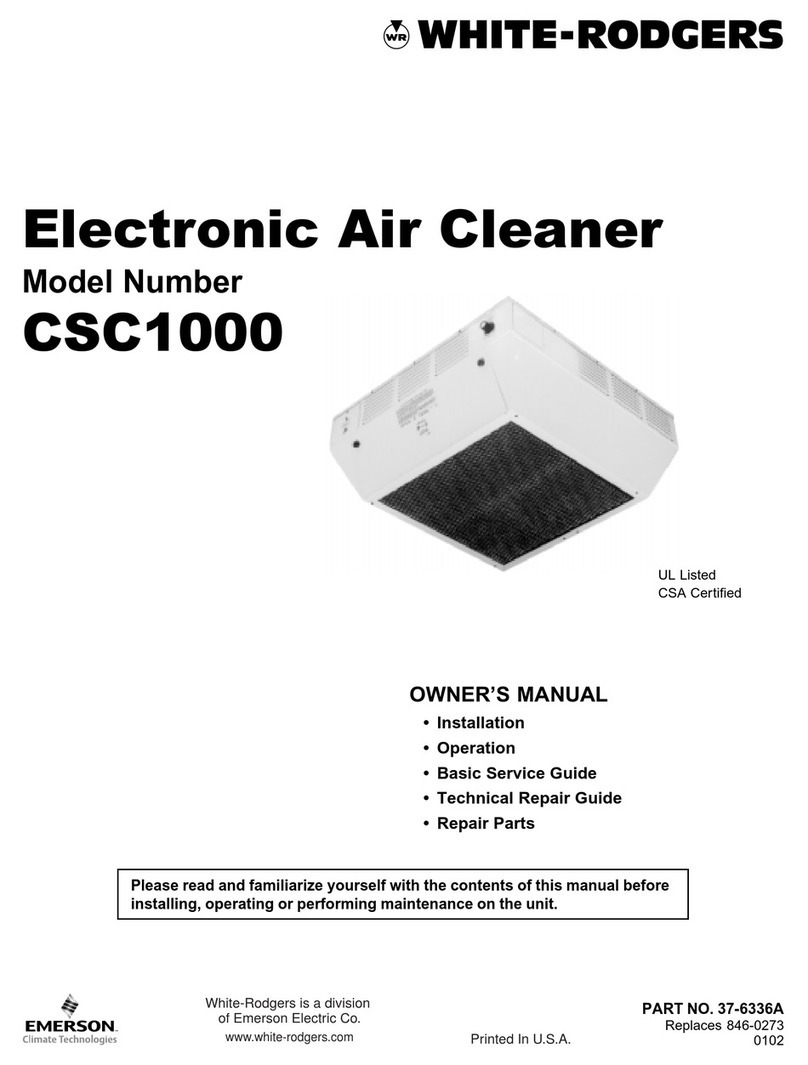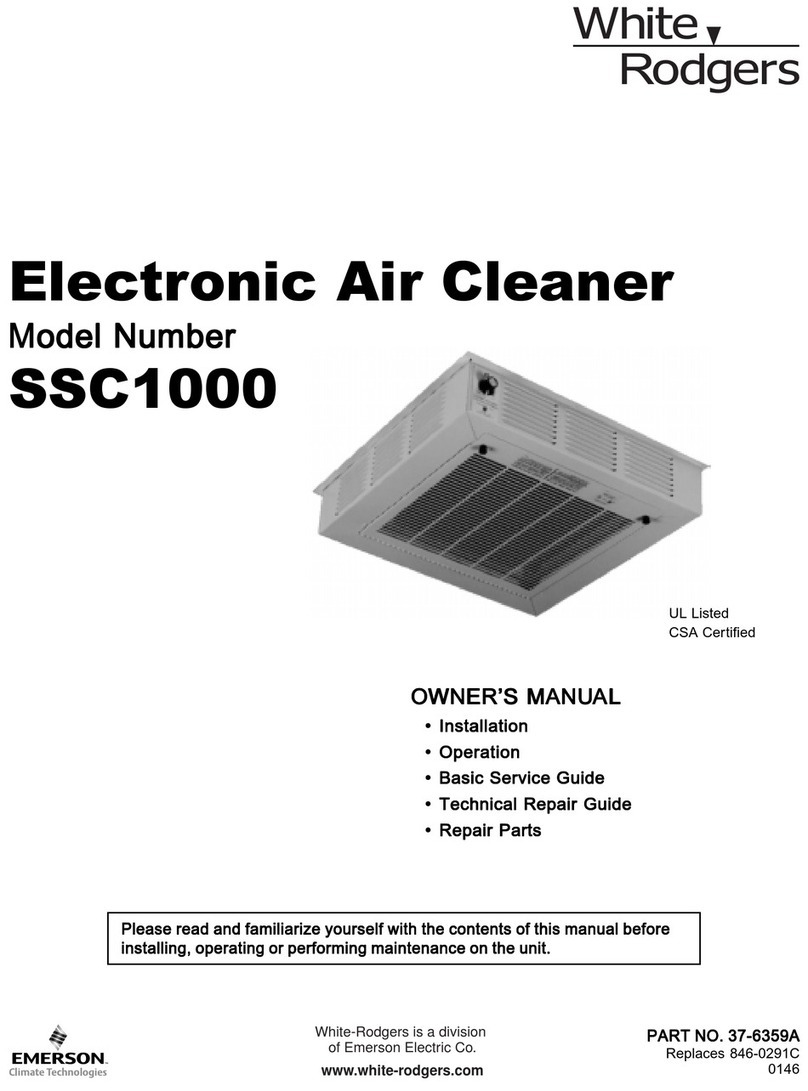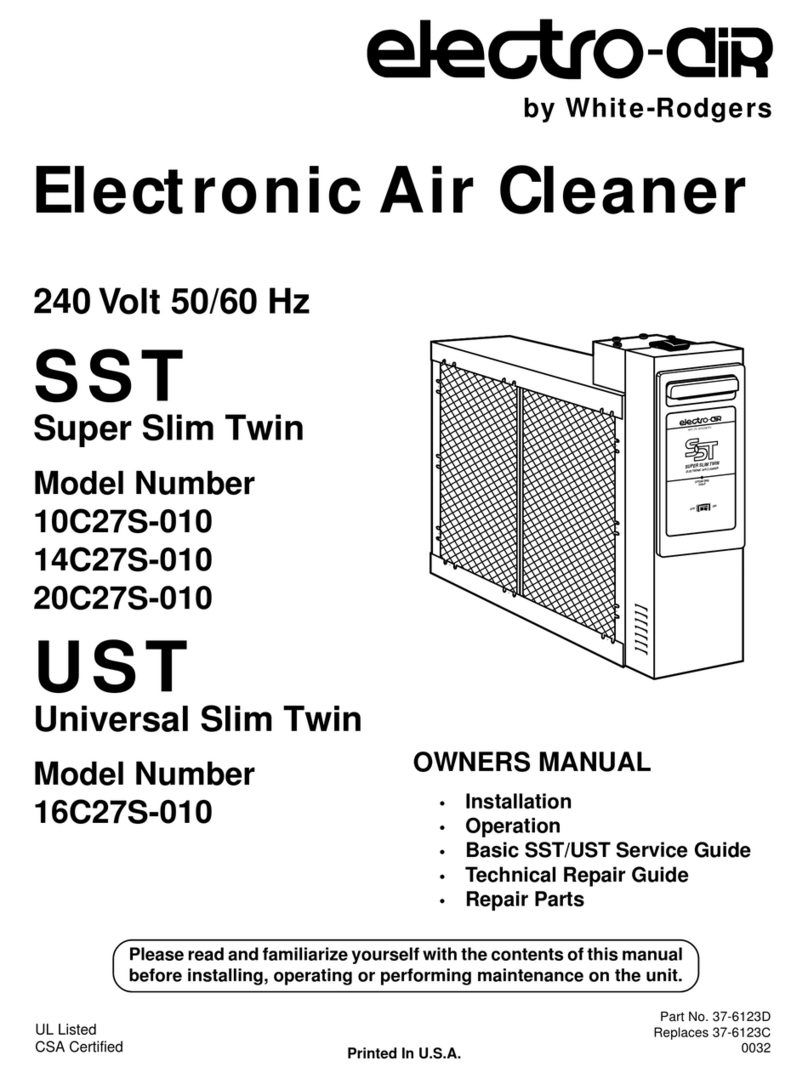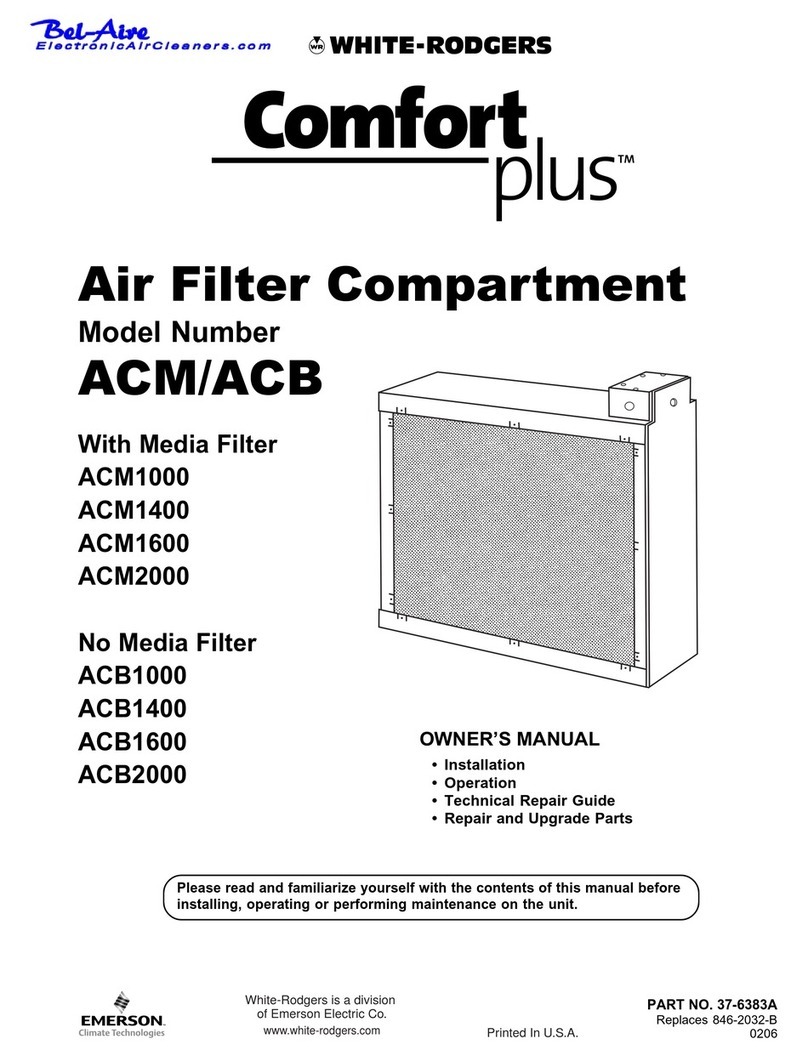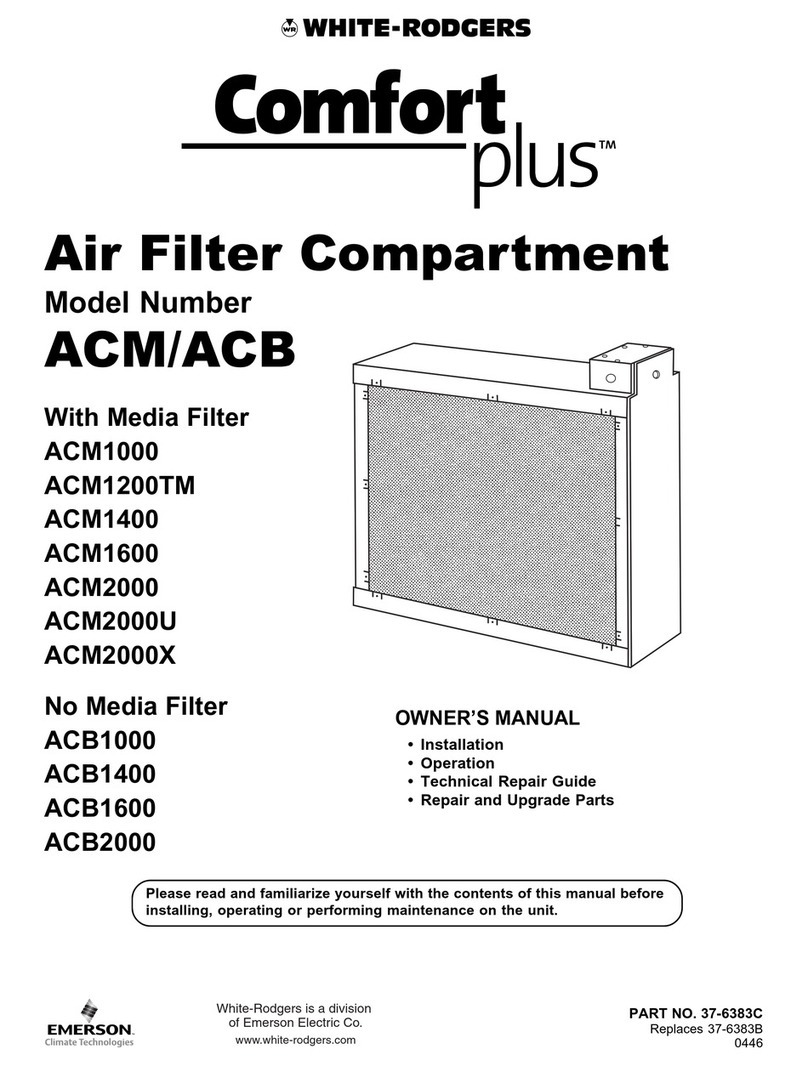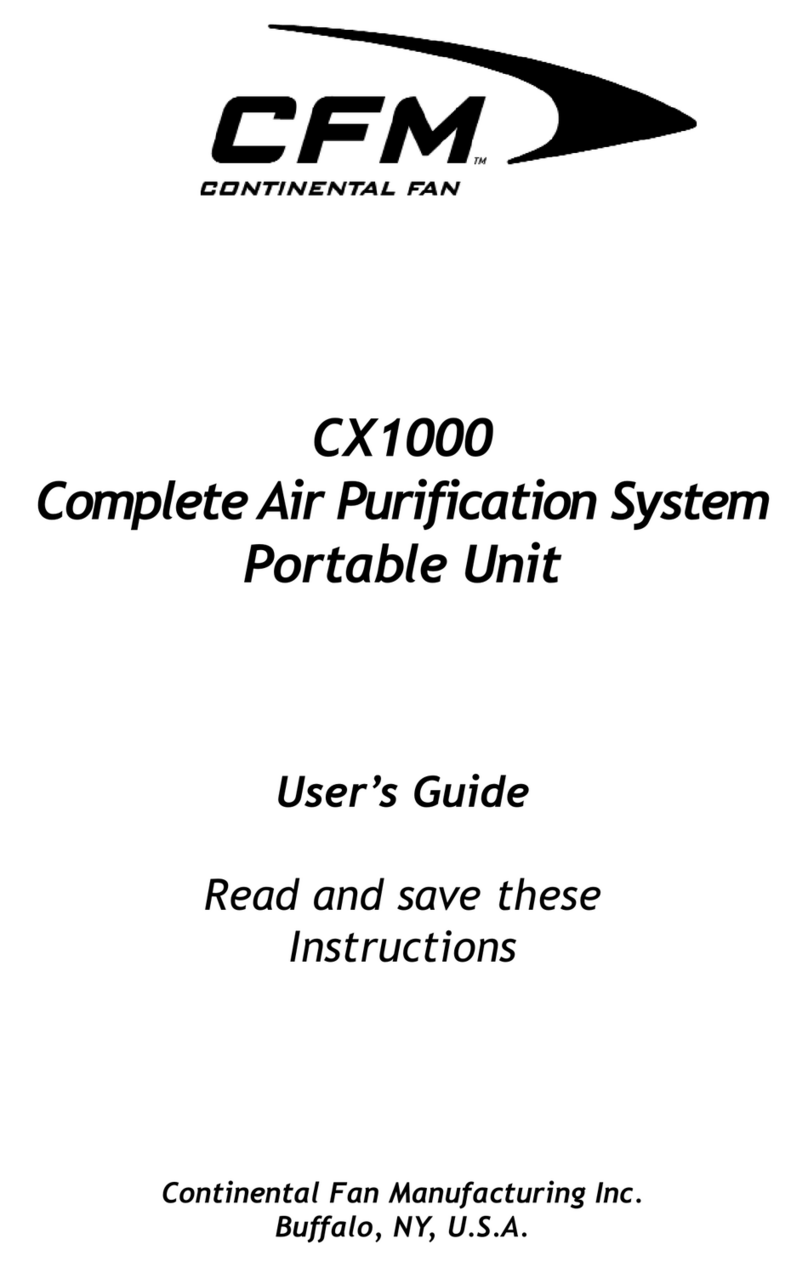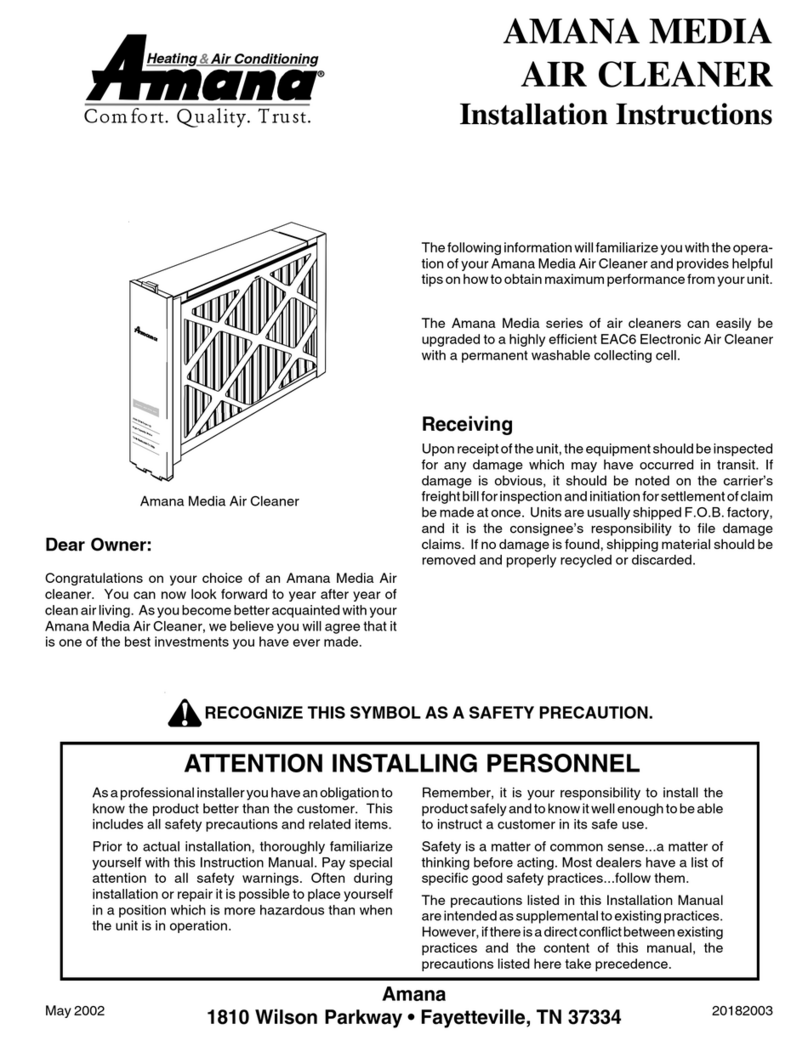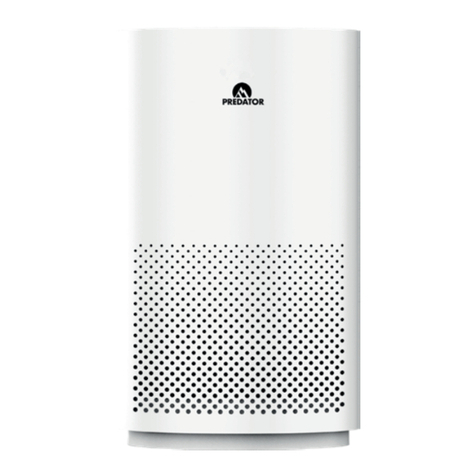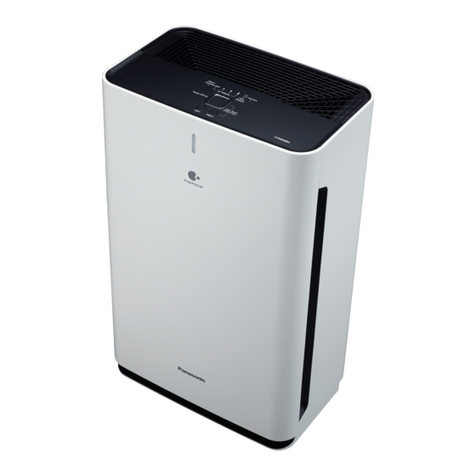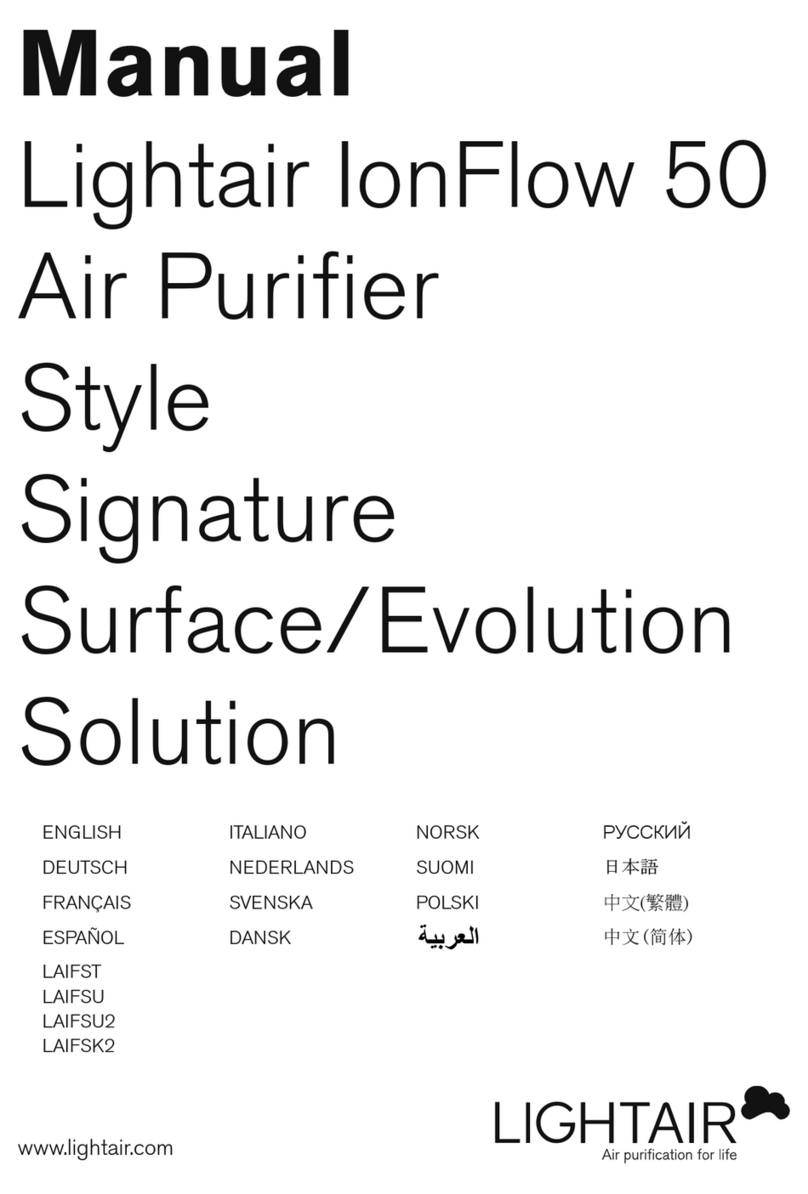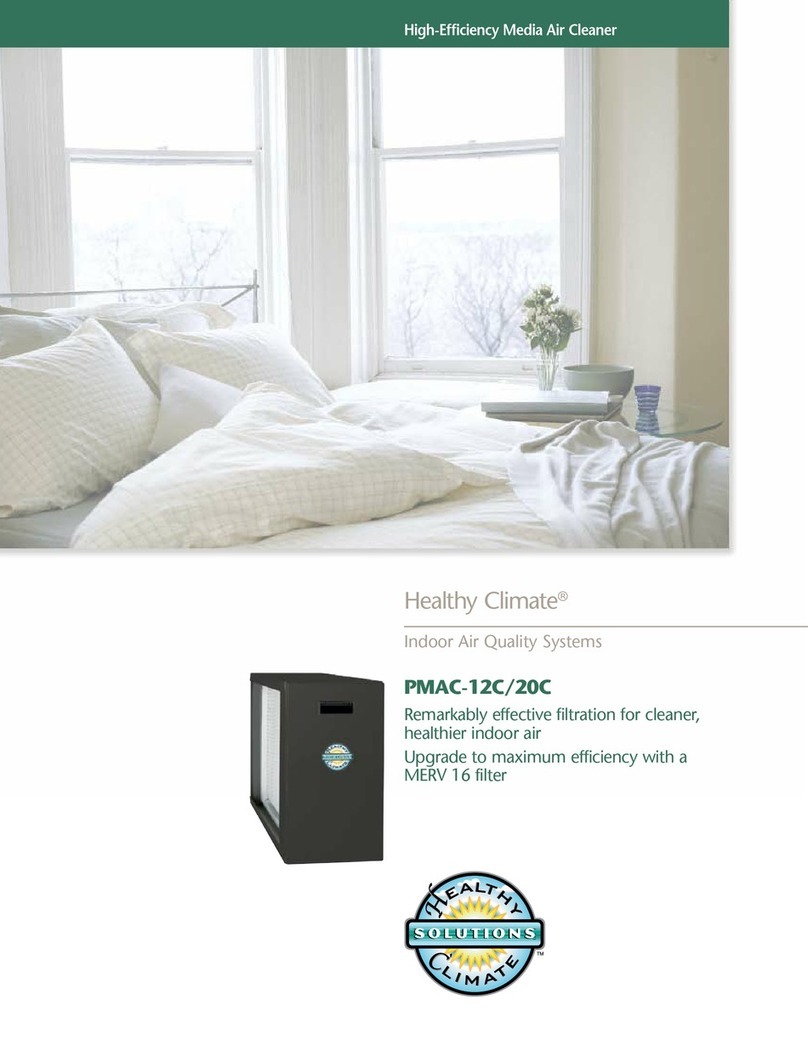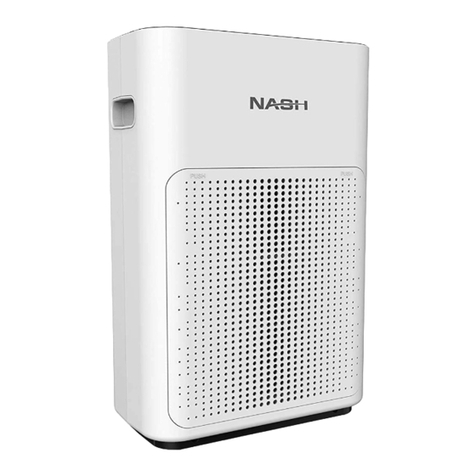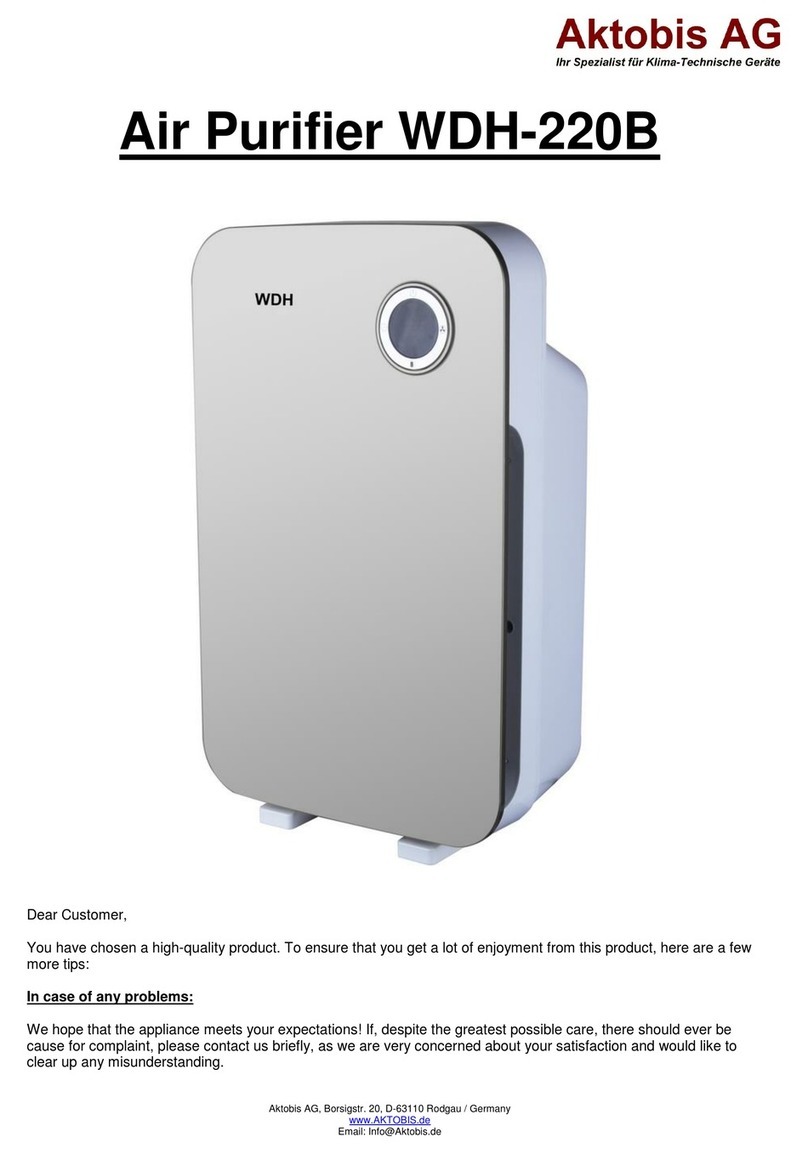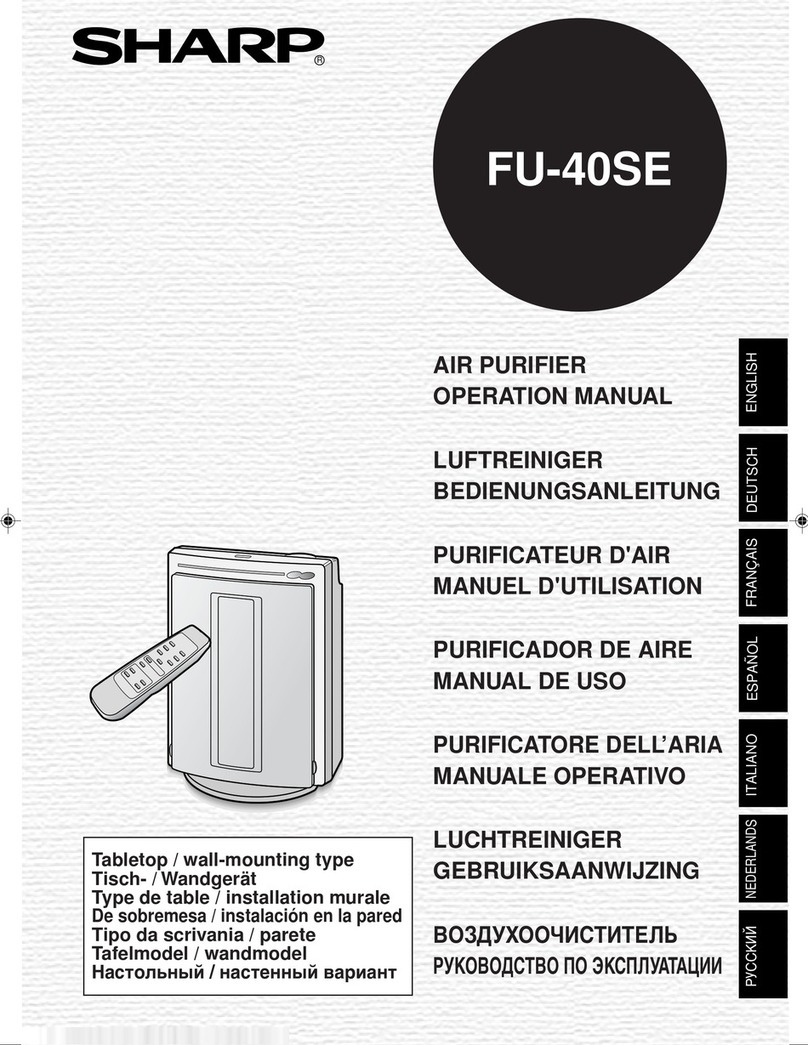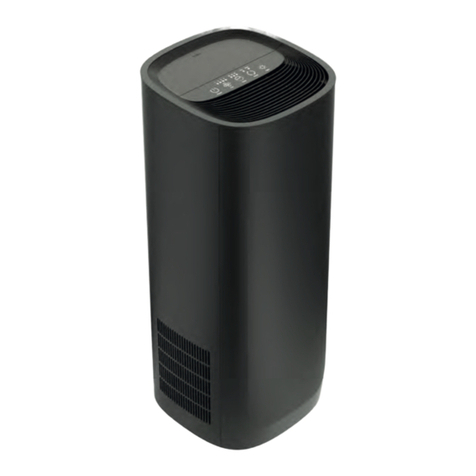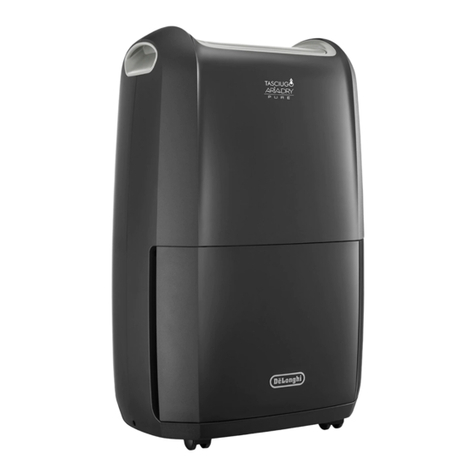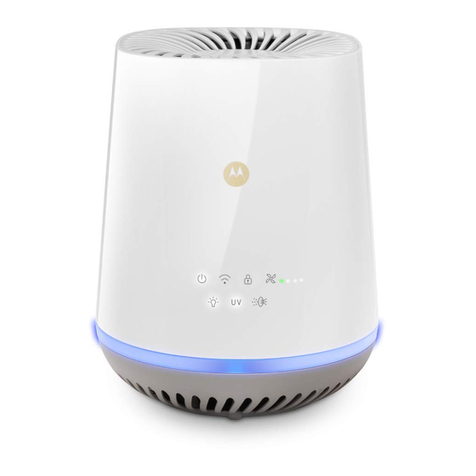
2
DID YOU GET THE RIGHT SIZEDID YOU GET THE RIGHT SIZE
DID YOU GET THE RIGHT SIZEDID YOU GET THE RIGHT SIZE
DID YOU GET THE RIGHT SIZE
AIR CLEANERAIR CLEANER
AIR CLEANERAIR CLEANER
AIR CLEANER
Model SST1000Model SST1000
Model SST1000Model SST1000
Model SST1000 is designed for heating or cooling blow-
ers delivering 600 to 1200 cubic feet of air per minute
(cfm.)
Model SST1400Model SST1400
Model SST1400Model SST1400
Model SST1400 is designed for heating or cooling blow-
ers delivering 1000 to 1600 cfm.
Model SST1600Model SST1600
Model SST1600Model SST1600
Model SST1600 is designed for heating or cooling blow-
ers delivering 1000 to 2000 cfm.
Model SST2000Model SST2000
Model SST2000Model SST2000
Model SST2000 is designed for heating or cooling blow-
ers delivering 1600 to 2200 cfm.
See specifications on page 9.
BASIC TOOLS REQUIREDBASIC TOOLS REQUIRED
BASIC TOOLS REQUIREDBASIC TOOLS REQUIRED
BASIC TOOLS REQUIRED
Tin Snip
Screwdriver
Rule or Tape Measure
Drill
RULES FOR SAFERULES FOR SAFE
RULES FOR SAFERULES FOR SAFE
RULES FOR SAFE
INSTALLATION AND OPERATIONINSTALLATION AND OPERATION
INSTALLATION AND OPERATIONINSTALLATION AND OPERATION
INSTALLATION AND OPERATION
Please read instructions before installing and using the Elec-
tronic Air Cleaner. This will help you obtain the full benefit from
the Electronic Air Cleaner you have selected.
Shut off power at fuse panel beforeShut off power at fuse panel before
Shut off power at fuse panel beforeShut off power at fuse panel before
Shut off power at fuse panel before
servicing. Failure to do so could resultservicing. Failure to do so could result
servicing. Failure to do so could resultservicing. Failure to do so could result
servicing. Failure to do so could result
in serious personal injury or death.in serious personal injury or death.
in serious personal injury or death.in serious personal injury or death.
in serious personal injury or death.
ELECTROCUTION HAZARDELECTROCUTION HAZARD
ELECTROCUTION HAZARDELECTROCUTION HAZARD
ELECTROCUTION HAZARD
▲
!WARNINGWARNING
WARNINGWARNING
WARNING
▲
!WARNINGWARNING
WARNINGWARNING
WARNING
Do not attempt installation of this unit unless you areDo not attempt installation of this unit unless you are
Do not attempt installation of this unit unless you areDo not attempt installation of this unit unless you are
Do not attempt installation of this unit unless you are
familiar with the necessary tools, equipment, utilityfamiliar with the necessary tools, equipment, utility
familiar with the necessary tools, equipment, utilityfamiliar with the necessary tools, equipment, utility
familiar with the necessary tools, equipment, utility
connections and potential hazards.connections and potential hazards.
connections and potential hazards.connections and potential hazards.
connections and potential hazards.
Installation should be performed only by a qualifiedInstallation should be performed only by a qualified
Installation should be performed only by a qualifiedInstallation should be performed only by a qualified
Installation should be performed only by a qualified
service provider.service provider.
service provider.service provider.
service provider.
Failure to do so could result in reduced performanceFailure to do so could result in reduced performance
Failure to do so could result in reduced performanceFailure to do so could result in reduced performance
Failure to do so could result in reduced performance
of the unit, serious personal injury or death.of the unit, serious personal injury or death.
of the unit, serious personal injury or death.of the unit, serious personal injury or death.
of the unit, serious personal injury or death.
▲
!WARNINGWARNING
WARNINGWARNING
WARNING
Installation of this unit must comply with localInstallation of this unit must comply with local
Installation of this unit must comply with localInstallation of this unit must comply with local
Installation of this unit must comply with local
electric codes or other applicable codes.electric codes or other applicable codes.
electric codes or other applicable codes.electric codes or other applicable codes.
electric codes or other applicable codes.
Review and understand local codes prior toReview and understand local codes prior to
Review and understand local codes prior toReview and understand local codes prior to
Review and understand local codes prior to
installation.installation.
installation.installation.
installation.
Do not use this apparatus in an explosiveDo not use this apparatus in an explosive
Do not use this apparatus in an explosiveDo not use this apparatus in an explosive
Do not use this apparatus in an explosive
atmosphere.atmosphere.
atmosphere.atmosphere.
atmosphere.
Failure to do so could result in serious personalFailure to do so could result in serious personal
Failure to do so could result in serious personalFailure to do so could result in serious personal
Failure to do so could result in serious personal
injury or death.injury or death.
injury or death.injury or death.
injury or death.
▲
!CAUTIONCAUTION
CAUTIONCAUTION
CAUTION
CABINET AND CELLS MAY CONTAINCABINET AND CELLS MAY CONTAIN
CABINET AND CELLS MAY CONTAINCABINET AND CELLS MAY CONTAIN
CABINET AND CELLS MAY CONTAIN
SHARP EDGES.SHARP EDGES.
SHARP EDGES.SHARP EDGES.
SHARP EDGES.
Use care when servicing unit or handl-Use care when servicing unit or handl-
Use care when servicing unit or handl-Use care when servicing unit or handl-
Use care when servicing unit or handl-
ing cells. Failure to do so could resulting cells. Failure to do so could result
ing cells. Failure to do so could resulting cells. Failure to do so could result
ing cells. Failure to do so could result
in minor personal injury.in minor personal injury.
in minor personal injury.in minor personal injury.
in minor personal injury.
1. Read the Owners Manual and the Rules for Safe
Operation carefully. Failure to follow these rules and
instructions could cause a malfunction of filter or
unsatisfactory service.
2. Follow a regular service and maintenance schedule
for efficient operation.
3. Unit must run for one full hour after installation. This
will allow the collecting cells to reach peak efficiency.
4. If Air Flow Monitor is required, order F859-0381 kit.
TABLE OF CONTENTSTABLE OF CONTENTS
TABLE OF CONTENTSTABLE OF CONTENTS
TABLE OF CONTENTS
Rules for Safe Installation and Operation ............2
How the Air Cleaner Works..................................3
Construction of the Air Cleaner ............................3
Preinstallation.......................................................4
Installation ............................................................6
Wiring Instructions ...............................................7
Operation .............................................................8
Maintenance and Washing...................................8
Specifications .......................................................9
Basic SST Service Guide...................................10
Technical Repair Guide......................................11
Air Cleaner Retrofit (Upgrade) Kit Installation....13
Repair Parts .......................................................14
Wash Reminder .................................................16

